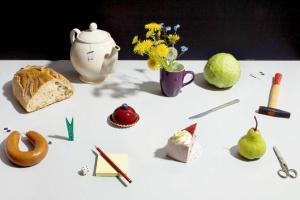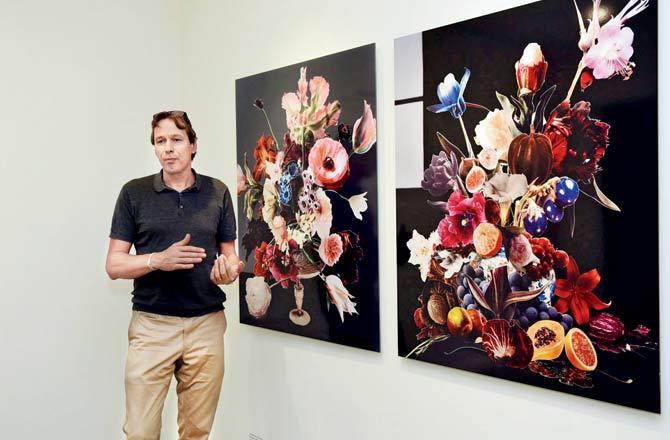The everyday object has been elevated to high art in a new photography exhibition

Spot the Difference by Uta Eisenreich
To Dutch fashion photographers Anuschka Blommers and Niels Schumm, a potato and a Rolex are like potato-potahto: they shoot the former exactly as they shoot the latter. A new exhibition at Jehangir Nicholson Art Foundation (JNAF), CSMVS, called Still/Life, in collaboration with Foam Fotografiemuseum Amsterdam, presents this side of Dutch photography and art: an obsession with the humble, the boring, the drab.
ADVERTISEMENT
Curator of JNAF, Kamini Sawhney says, "They've shot the potato in such lavish detail and lighting that it looks like a jewel. It also harks back to the famous The Potato Eaters by Van Gogh." Marcel Feil, curator of the show, says, "If you pay attention, you see the beauty in the potato, a huge richness of colours in its skin. Each potato is different. These are portraits of individual potatoes. So, it's both still life and portrait photography."

Potato by Anuschka Blommers and Niels Schumm
Sixteen photographers are represented in the show, with 48 photographs and five videos. The potato series includes four portraits. The thread that connects all the works is irony. Every image "says one thing but actually means something else," says Feil. For instance, a series of six photographs that looks like expensive vases by Maurice Scheltens and Liesbeth Abbenes. "The objects consist of very cheap trophies," says Feil.
"These trophies are mass produced. The photographers deconstructed a trophy into different pieces, and reconstructed in various ways to make these shapes. Then they did a very smart thing. They put the newly constructed trophy inside a carton, and three sides of the box, [excluding] the backdrop, were covered with cheap cloth that people use in the kitchen. The cloth is reflected in the trophy. So, it looks like porcelain, like china, very beautifully hand-painted, but it's not. It's an illusion."

Curator Marcel Feil against the Bouquet series. Pic/Bipin Kokate
The same photographer duo has shot four still lifes with cutouts of flowers and fruits, which spread across the canvas like a hastily-made bouquet. "For most people, these are visually directly related to the Dutch painterly tradition of still-life painting in the 17th century, with flowers and fruits," says Feil. "But, again, it's not what you think it is. The original paintings are appreciated because of their naturalistic qualities. They are so real, you can almost smell the flowers. In the 17th century, when an artist decided to paint fruit, it was quite exceptional, because fruit in itself is not so special. So, why would they decide to paint fruits?"
The short answer is the artist was a showboat. The long answer is: "It can be quite challenging to make a still life that contains a glass with water, reflection through the glass, with a piece of fur of a dead rabbit, or some fruits or a fish. So, the skins are different. In order to paint this in a very convincing way is really difficult. So, these still lifes were a way to show the artist's skill: look, I can master reality." The photographers, instead, constructed their image by scissoring through cooking books, auction catalogues and books on art history. "So, it's a play between real and not real, which is a given for photography."
Series after series in the exhibition questions reality. Another set has card paper folded like planes that will never take off. "If you treat a piece of paper like origami, it becomes a paper flower. And when you play with lighting, it becomes three-dimensional. For most people, photography is related to visual reality.
And it is more or less a truthful representation of official surroundings; it is not. Because photography, like painting, is a subjective medium. So, our perception is tricked. We tend to believe what we think we see. So, it's also a lesson: look carefully, look closely, and even ordinary, banal things can become beautiful."
Like a single potato, when looked at closely, can become truly singular.
When: Till February 10
Where: Jehangir Nicholson Art Foundation, CSMVS, Fort
Entry: Rs 85
Catch up on all the latest Mumbai news, crime news, current affairs, and also a complete guide on Mumbai from food to things to do and events across the city here. Also download the new mid-day Android and iOS apps to get latest updates
 Subscribe today by clicking the link and stay updated with the latest news!" Click here!
Subscribe today by clicking the link and stay updated with the latest news!" Click here!






